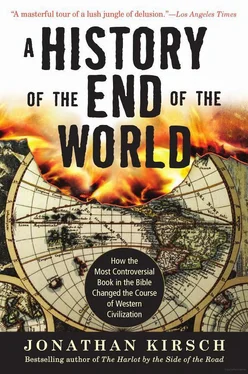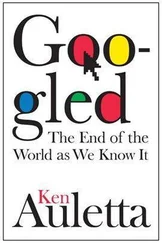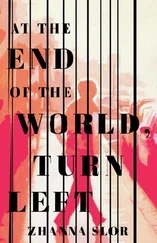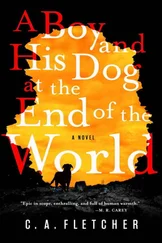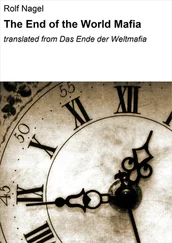On the subject of doomsday, Mather was inspired by both religion and science. He conceded that the New Jerusalem would appear in North America only after the world was destroyed in a vast conflagration, just as John had predicted in Revelation, but he was also mindful of the latest discoveries of the earth sciences when he described the end-times. Volcanoes, he suggested, will be the instrument of the divine will: “Subterraneous Combustions, and such Amassments of Igneous Particles, ” he writes, “which are an Eternal Fire. ” 22And, significantly, he looked beyond the days of terror and tribulation to the shining moment when the New Jerusalem floats down from the heavens.
“[O]ur glorious LORD will have an Holy city in AMERICA,” Mather declares in 1709, adopting a phrase that became (and remains) an American credo, “a City, the Street whereof will be Pure Gold.” 23
A century or so after Mather uttered these words, men, women, and children by the millions would begin to arrive in America—“huddled masses yearning to breathe free,” according to the poem by Emma Lazarus that is famously inscribed on the Statue of Liberty—and they, too, came in search of streets paved with gold. 24Even if they were wholly ignorant of the book of Revelation, they were following in the footsteps of the Puritan fathers who failed to foresee what would become of their apocalyptic fancies.
The Puritan colonists, of course, were no democrats. Rather, they aspired to the kind of government that is deeply implicit in both Jewish and Christian scripture and especially the book of Revelation—“a theocracy, as near as might be, to that which was the glory of Israel,” according to John Mather. 25That’s why the earliest Puritan colonists in America, who aspired to create a religious utopia, felt thoroughly justified in denying citizenship to anyone who was not a member of a Puritan congregation, banishing religious dissenters, and even sending a few Quakers to the gallows.
Happily for the health of the American democracy, the Puritans were soon eclipsed by new arrivals to North America who did not feel obliged to impose their religious beliefs and practices on their fellow citizens. The Founding Fathers, for example, drew more inspiration from the proto-democracies of pagan Greece and Rome than they did from the divine monarchy that is celebrated so lushly in Revelation. Indeed, they were perfectly willing to tinker with Holy Writ itself. Thomas Jefferson, for example, disdained the book of Revelation and boldly took it upon himself to rewrite the Gospels to suit the spirit of a revolutionary and democratic age, keeping only what he regarded as “the very words only of Jesus” and cutting away “the artificial vestments in which they have been muffled by priests, who have travestied them into various forms as instruments of riches and power for themselves.” 26
Still, the glowing theological core of Revelation—the sure promise that a new and better world was coming soon—appealed to even the most secular of the American patriots. Thus, for example, the apocalyptic vocabulary of abuse was put to good use by pamphleteers in the struggle for American independence. King George III was denounced as the Anti-christ, and the Stamp Act of 1765, which required the American colonists to affix a tax stamp bearing the king’s name and image to their papers and publications, was linked to the prophecy in Revelation that Satan would command all of mankind to display the mark of the Beast.
To be sure, many American patriots were also pious Christians, but when colonial preacher Samuel West sermonized on “that terrible denunciation of divine wrath against the worshippers of the beast and his image,” he was referring to the British lion rather than the satanic seven-headed dragon of Revelation. 27And the American version of the New Earth in 1776 was a place where every human being—or, at least, every adult white male—enjoyed the “inalienable rights” of Life, Liberty, and the Pursuit of Happiness, free of the dictates of kings or priests. Novus Ordo Seculorum is the Latin motto that was adopted in 1782 and placed on the great seal of the United States: “A new order of the ages.” Even a red-hot revolutionary like Thomas Paine, who may have stripped his rhetoric of all religious trappings, expressed himself in terms of the millennial ideal that can be traced all the way back to the apocalyptic tradition of distant antiquity. And the destiny of American democracy, as Paine defined it, owes something to the words that were written down in John’s little book in biblical antiquity.
“We have it in our power,” he declared, “to begin the world over again.” 28
Of course, the old ideas about the apocalyptic kingdom of Christ on earth were never wholly abandoned in colonial America. Now and then, the banked embers of religious true belief would burst into flame as preachers stoked the fears and longings of their congregations with the kind of hard-sell sermonizing that is the trademark of American evangelism. Again and again, the spirit of Christian revival attracted the crowds to church halls and tent meetings and whipped them into a spiritual frenzy—so often, in fact, that certain stretches of western New York State came to be called the Burned-Over District precisely because its populace was so susceptible to each new wave of religious enthusiasm.
The revival movement in America was “the forerunner of something vastly great,” according to Jonathan Edwards (1703–1758), the Puritan minister whose preaching sparked the so-called First Great Awakening in the mid–eighteenth century. Not incidentally, Edwards was the author of a vast commentary on Revelation titled Notes on the Apocalypse. 29Starting with the prophecy in Revelation that the Antichrist will reign for 1,260 “days,” which he interpreted to mean “years,” Edwards decided that the reign of the arch-demon had begun in 606 and calculated that it would end sometime around 1866. And he saw the convulsions of the Great Awakening as “signs of the millennium lately begun in Northampton”—that is, the Massachusetts town where his own pulpit was located. 30
Some of the more sober clergy, however, were skeptical of spontaneous mass conversions, and they fretted that the men and women who experienced such powerful revelations during the revival meetings of the Great Awakening “had fallen prey to dangerous enthusiasms and delusions.” 31When another wave of revivalism erupted in the 1790s, the Second Great Awakening, the religious idealism of some Christians in America began to express itself in quite a different way. A new generation of Christians was inspired to agitate for the abolition of slavery and the emancipation of women as a way of hastening the millennial kingdom. Here, too, were the first stirrings of a distinctively American version of the apocalyptic idea, a “high-octane blend of millennial fervor and patriotic enthusiasm,” according to American cultural historian Paul Boyer, that expressed itself in efforts to improve the quality of American democracy. 32
Indeed, the gloom and doom of Revelation were far less compelling to the high-spirited and high-minded American nation builders than, say, the promise in Matthew that the kingdom of heaven was open to anyone who clothed the naked, fed the hungry, and sheltered the homeless. Thus, Christian piety was translated into what later came to be called the Social Gospel—that is, a call “to build on American soil a society worthy of the exalted vision of the new Jerusalem found in the book of Revelation,” including principled crusades for the abolition of slavery and alcohol, the reform of prisons, and the opening of shelters for the homeless and the hungry and asylums for the ailing—“the least of these my brethren,” as Jesus Christ puts it. 33
Читать дальше
